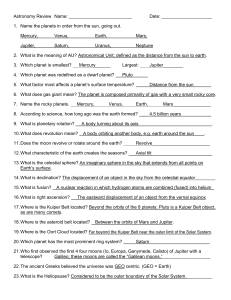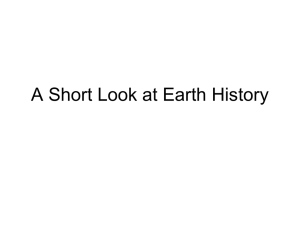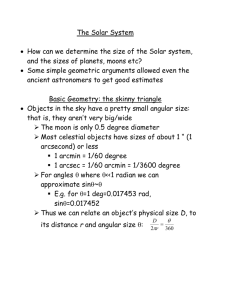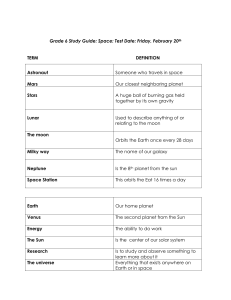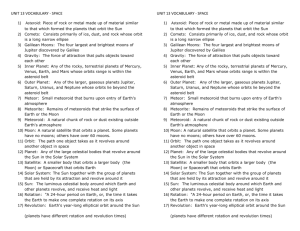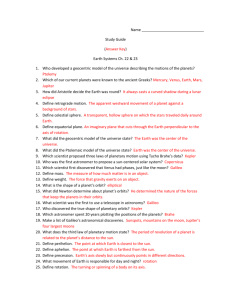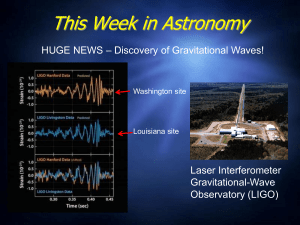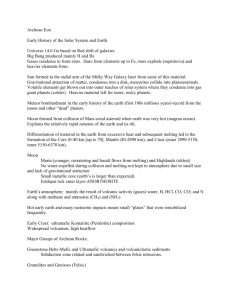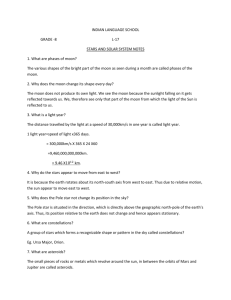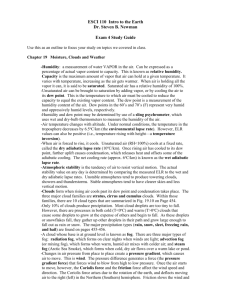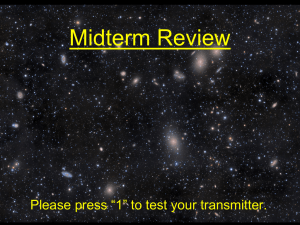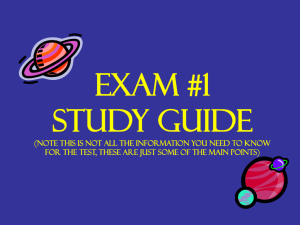Topics - Manhasset Public Schools
advertisement
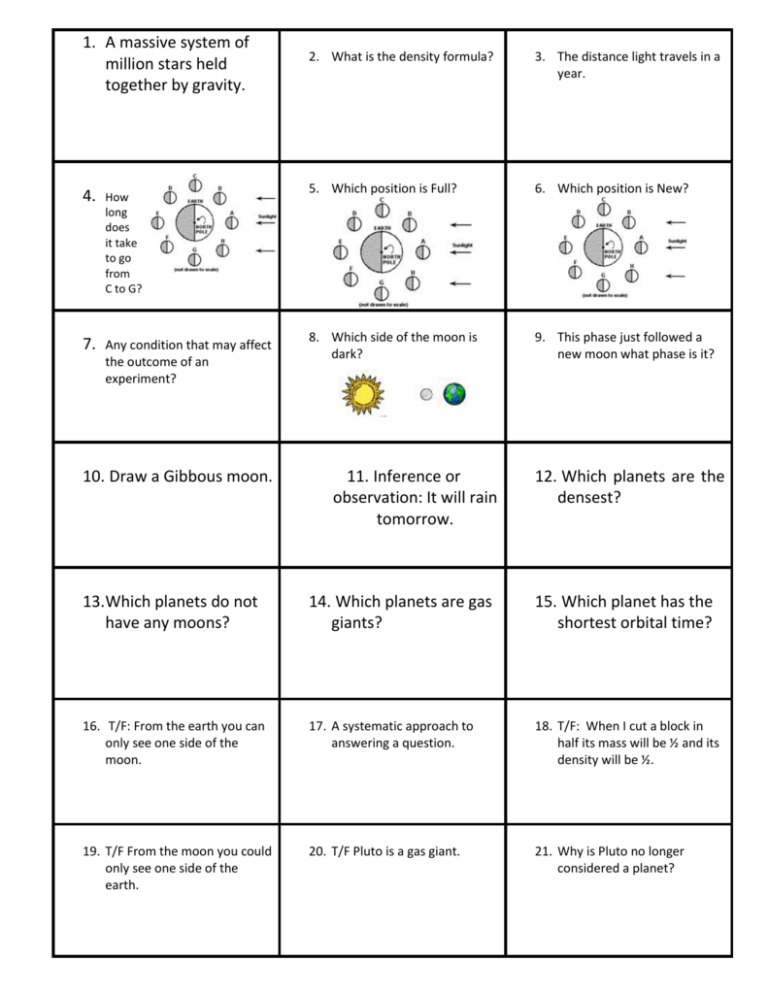
1. A massive system of million stars held together by gravity. 4. How long does it take to go from C to G? 7. Any condition that may affect the outcome of an experiment? 10. Draw a Gibbous moon. 2. What is the density formula? 3. The distance light travels in a year. 5. Which position is Full? 6. Which position is New? 8. Which side of the moon is dark? 9. This phase just followed a new moon what phase is it? 11. Inference or observation: It will rain tomorrow. 12. Which planets are the densest? 13.Which planets do not have any moons? 14. Which planets are gas giants? 15. Which planet has the shortest orbital time? 16. T/F: From the earth you can only see one side of the moon. 17. A systematic approach to answering a question. 18. T/F: When I cut a block in half its mass will be ½ and its density will be ½. 19. T/F From the moon you could only see one side of the earth. 20. T/F Pluto is a gas giant. 21. Why is Pluto no longer considered a planet? Name______________________________ date_____________ Study Guide Science 8 Test Thursday 10/21: 33 multiple choice and short answers. Use old quizzes and study cards to practice Know how to read a chart Topics: Scientific Method: Control, hypothesis, variable Inference, observation Density Metric System Astronomy: Light year, galaxy Stars, HR diagram Phases of the moon: Gibbous, Crescent, Full, New, Waxing, Waning Identify bright and dark side from diagram Identify location of full and new moon Lunar Facts: 8 phases No atmosphere Apollo mission landings Less gravity Orbits earth in 28-29 days Force of gravity keeps all planets, asteroids and moons in their obits. Inner Planets: solid dense orbit close to the sun with shorter time for orbits. Mercury: smallest, closest to sun, no atmosphere (no moon) Venus: around the size of earth, dense atmosphere, hottest planet because of cloud covering. (no moon) Mars: thin atmosphere, may have water, landed probes on surface. Current probe Curiosity Mars Rover Outer Planets: Jupiter, Saturn, Uranus, Neptune All are Large and made of mostly gas (Gas Giants) All have many moons All have rings , some thicker than others (Saturn) Pluto- Orbits in an elongated path outside of the plane of the rest of the planets. Now considered a “dwarf planet” Answers: 1. 2. 3. 4. 5. 6. 7. 8. 9. 10. 11. 12. 13. 14. 15. 16. 17. 18. 19. 20. 21. Galaxy Density = mass/volume Light year 14 days E A variable right cresent inference Inner planets mercury- mars Mercury, Venus Jupiter, Neptune, Saturn, Uranus Mercury true scientific method False mass ½ density same False earth rotates moons sees all sides False Elliptical orbit, too small, orbit not in line with other planets, located in an area with lots of plutos



